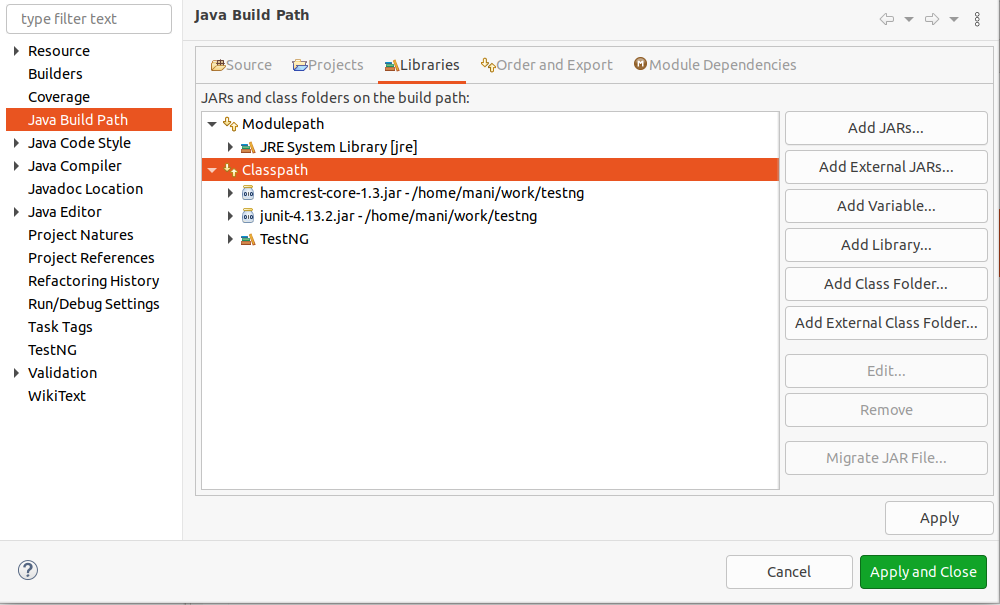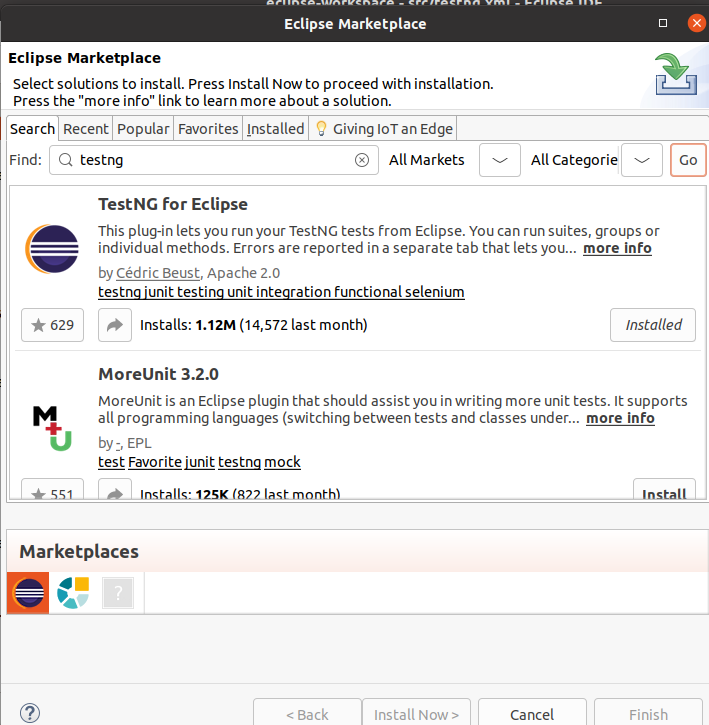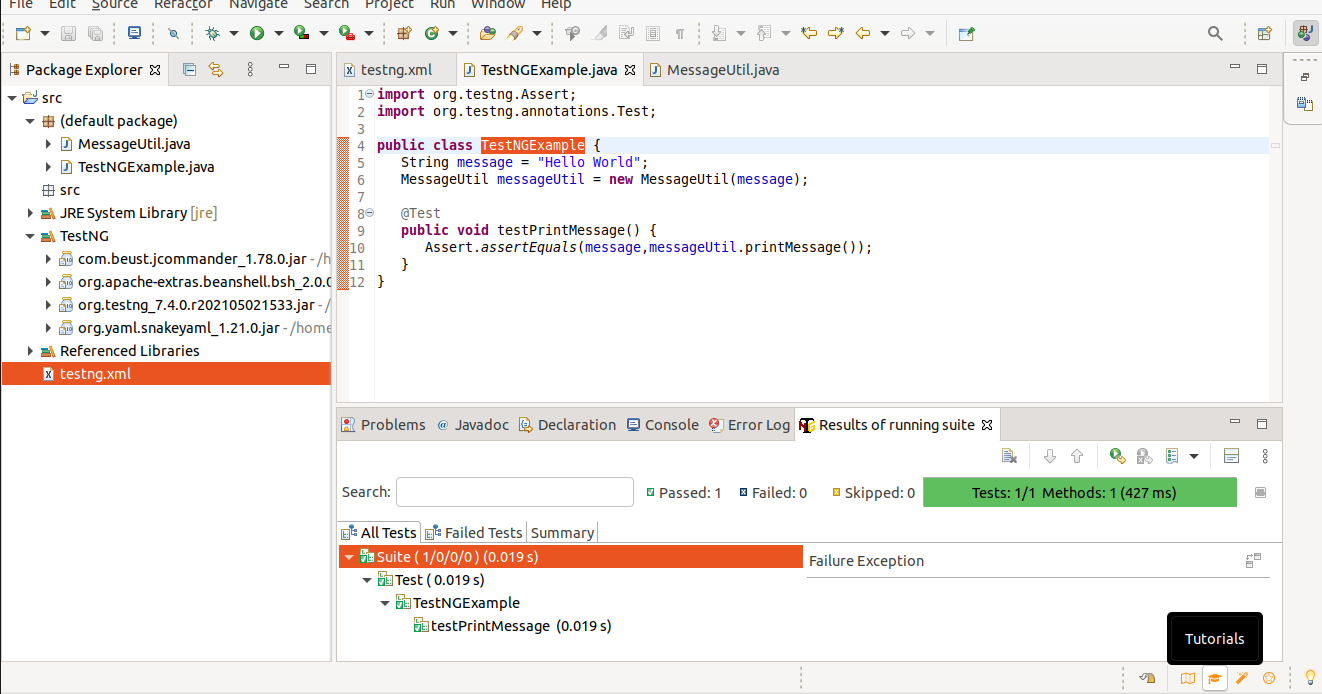
- TestNG - Home
- TestNG - Overview
- TestNG - Environment
- TestNG - Writing Tests
- TestNG - Basic Annotations
- TestNG - Execution Procedure
- TestNG - Executing Tests
- TestNG - Suite Test
- TestNG - Ignore a Test
- TestNG - Group Test
- TestNG - Exception Test
- TestNG - Dependency Test
- TestNG - Parameterized Test
- TestNG - Run JUnit Tests
- TestNG - Test Results
- TestNG - Annotation Transformers
- TestNG - Asserts
- TestNG - Parallel Execution
- TestNG - Plug with ANT
- TestNG - Plug with Eclipse
- TestNG - TestNG - vs JUnit
TestNG - Plug with Eclipse
To set up TestNG with Eclipse, follow the steps given below −
Step 1: Download TestNG Archive
Download the latest version of TestNG jar file from http://www.testng.org
| OS | Archive name |
|---|---|
| Windows | testng-7.4.jar |
| Linux | testng-7.4.jar |
| Mac | testng-7.4.jar |
We assume you have copied the above JAR file in /work/testng folder.
Step 2: Set Eclipse environment
Open eclipse → right click on the project and go to property → Build Path → Configure Build Path and add the testng-7.4.jar in the libraries using Add External Jar button.

-
We assume that your Eclipse has inbuilt TestNG plug-in; if it is not available, then please get the latest version using the update site.
In your Eclipse IDE, select Help / Eclipse Marketplace.
-
Search for Testng. You will get the TestNG in the list. Click on Install as shown below:

Now, your Eclipse is ready for the development of TestNG test cases.
Step 3: Verify TestNG Installation in Eclipse
Create a project TestNGProject in Eclipse at any location.
Create a class MessageUtil to test in the project.
/*
* This class prints the given message on console.
*/
public class MessageUtil {
private String message;
//Constructor
//@param message to be printed
public MessageUtil(String message) {
this.message = message;
}
// prints the message
public String printMessage() {
System.out.println(message);
return message;
}
}
Create a test class TestNGExample in the project.
import org.testng.Assert;
import org.testng.annotations.Test;
public class TestNGExample {
String message = "Hello World";
MessageUtil messageUtil = new MessageUtil(message);
@Test
public void testPrintMessage() {
Assert.assertEquals(message,messageUtil.printMessage());
}
}
The project structure should be as follows −

Finally, verify the output of the program by right-clicking on the program and running as TestNG.
Verify the result.
